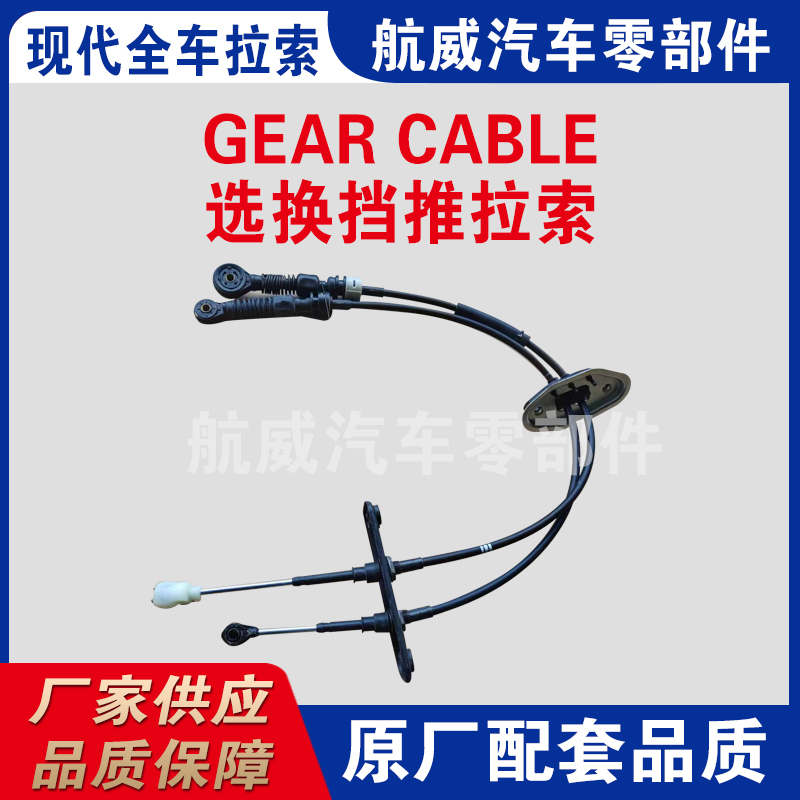Understanding Push and Pull Control Cables for Throttles in Mechanisms
Understanding Push and Pull Throttle Cables Mechanisms and Applications
Throttle cables are a vital component of many vehicles and machinery, playing a critical role in controlling the engine's power output. Among these cables, the push and pull throttle cable is a common mechanism that allows for precise control of throttle position, enabling the smooth operation of various types of engines, from motorcycles to lawnmowers and even in some automotive applications.
What are Push and Pull Throttle Cables?
Throttle cables come in two main types push and pull cables. Push cables operate by transmitting force when they are pushed, while pull cables transmit force when they are pulled. This dual functionality is essential in applications where the operator must control the throttle from different positions or angles, ensuring that the throttle responds appropriately to the driver's or operator’s commands.
In many systems, the push cable is responsible for closing the throttle, while the pull cable is used to open it. This setup provides redundancy; if one cable fails, the other can serve as a backup, providing an added layer of safety for the operator. The design and material of these cables contribute to their durability and reliability, as they must withstand the rigors of constant movement and exposure to environmental elements.
The Mechanism Behind Push and Pull Throttle Cables
The push and pull throttle cables typically consist of a flexible casing that houses a wire core. When a driver or operator interacts with the throttle control, a lever or pedal moves either forward or backward, causing one of the cables to either push or pull. This action is translated into mechanical movement at the throttle body of the engine, adjusting the throttle plate and controlling the air-fuel mixture that enters the engine.
The ease of movement is critical; therefore, the cables often have a low friction design, which minimizes resistance and allows for quick and responsive throttle operation. High-quality cables are designed to be resistant to wear and tear, ensuring a long service life and consistent performance.
push and pull throttle cable

Applications of Push and Pull Throttle Cables
Push and pull throttle cables are found in a variety of applications across different industries. In motorcycles, these cables are crucial for engine responsiveness, allowing riders to accelerate smoothly or decelerate as needed. Similarly, in marine applications, throttle cables connect the throttle lever on a boat to the engine, ensuring that users can control speed effectively.
In the lawn care industry, push and pull throttle cables are used in equipment such as lawnmowers, chainsaws, and trimmers. The operator can easily adjust engine speed to achieve optimal performance, enabling efficient operation for various tasks. This versatility makes these cables indispensable in both consumer and commercial machinery.
Maintenance and Troubleshooting
Maintaining push and pull throttle cables is essential for ensuring their longevity and performance. Regular inspections for signs of wear, fraying, or corrosion should be part of routine maintenance. Lubricating the cables can help maintain smooth operation and prevent binding, which is crucial for optimal throttle response.
Should issues arise, such as a lack of throttle responsiveness or the inability to return the throttle to the closed position, it may indicate a problem with the cable itself or the associated components. In such cases, a thorough inspection is necessary to determine whether the cable needs adjustment, lubrication, or replacement.
Conclusion
In summary, push and pull throttle cables are essential components in the operation of various engines in multiple fields. Their simplicity, reliability, and effectiveness make them paramount for controlling throttle response, thereby influencing overall performance. Understanding their function, maintenance needs, and applications can help operators ensure that their machinery runs smoothly and efficiently, ultimately leading to a safer and more efficient operational environment. Whether in motorcycles, boats, or lawn equipment, these small components play a significant role in enhancing the user experience and ensuring effective machinery operation.
-
Upgrade Your Control with Premium Throttle CablesNewsAug.08,2025
-
Stay in Control with Premium Hand Brake CablesNewsAug.08,2025
-
Experience Unmatched Performance with Our Clutch HosesNewsAug.08,2025
-
Ensure Safety and Reliability with Premium Handbrake CablesNewsAug.08,2025
-
Enhance Your Vehicle with High-Performance Clutch LinesNewsAug.08,2025
-
Elevate Your Ride with Premium Gear CablesNewsAug.08,2025
